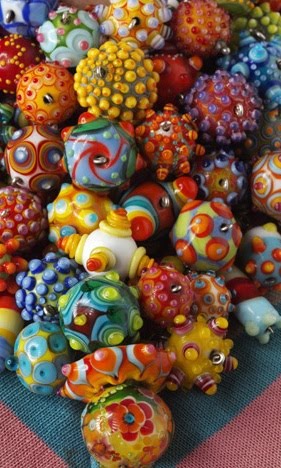
I've been reading Kenny Shopsin's EAT ME for the past few days. What a gem he is! Follow this link and scroll down to hear Kenny!
Earlier today the sunlight streaming in was so golden and this was our view from the window, the waterfall heavier from yesterday's rains. I cooked so much-- butternut soup, custardy (gluten free) french toast, rice and millet flour pancakes, fried eggs with avocados.

This was a meal that Mary and I made last year. I've been studying traditional Japanese cuisine for many years now. This year I finally made umeboshi with plums that I picked in California and pickled in Rhode Island.

I was in Japan to do glass work when 2005 turned into 2006. I stayed and worked in Kyoto the most, but also Tokyo, Kobe, Osaka, and Nara. In Kyoto I walked to Nishiki Market everyday. The market is about five blocks long and several centuries old, a cacophony of sounds as well as flavors and smells from over 100 vendors.

At one end the narrow market opens into a mall. There I found this imagawayaki shop where this beautiful and dulcet- sounding machine produces adzuki- filled cakes. At the end of the linked video you can see someone trimming the edges of the cakes with scissors.
Everyday I also walked to this mochi vendor in Gion, on Shijo- dori.

Everywhere plastic food is found in the windows of restaurants. I didn't think this looked appetizing, just beautiful because the orange roughy on top has such an enormous eye.

Plastic bento boxes

Plastic sushi (handrolls on the top shelf)

Plastic curry rice (kari raisu) in a train station (Note how the middle plate on the bottom row looks angry!)

I tried an omuraisu (omelette/ rice) shop in the mall at the end of the Nishiki Market. This came with a cup of corn chowder, a small salad, and a fried chicken cutlet. The plate was about as wide as a computer keyboard!

Supermarkets are full of fascinating things, like packages of octopus tentacles

huge turnips

and depending on the market and the time of year, you might encounter extraordinarily expensive fruits. When I was there the exchange was 83 yen to the dollar, which means that the fruit in this photo (top quality to be purchased and given as New Year's gifts) cost:
$5.23 for one kiwi
$4.38 for one orange
$13.07 for one mango
$43.80 for fifteen strawberries

Everywhere plastic food is found in the windows of restaurants. I didn't think this looked appetizing, just beautiful because the orange roughy on top has such an enormous eye.

Plastic bento boxes

Plastic sushi (handrolls on the top shelf)

Plastic curry rice (kari raisu) in a train station (Note how the middle plate on the bottom row looks angry!)

I tried an omuraisu (omelette/ rice) shop in the mall at the end of the Nishiki Market. This came with a cup of corn chowder, a small salad, and a fried chicken cutlet. The plate was about as wide as a computer keyboard!

Supermarkets are full of fascinating things, like packages of octopus tentacles

huge turnips

and depending on the market and the time of year, you might encounter extraordinarily expensive fruits. When I was there the exchange was 83 yen to the dollar, which means that the fruit in this photo (top quality to be purchased and given as New Year's gifts) cost:
$5.23 for one kiwi
$4.38 for one orange
$13.07 for one mango
$43.80 for fifteen strawberries




Comparing foreign exchange rates is one of my pastimes. Alot of the content on my old live journal blog posts about budget travel in South America back in early 2007 compares Colombian Pesos, US Dollars in Ecuador, Peruvian Soles, Bolivian Bolivarianos, Argentine Pesos, and Chilean Pesos. The same foods cost a wide range across various borders. If you ever find a comment of mine to be obnoxious, just erase it. You have the power to edit comments, even after they've been posted.
ReplyDelete